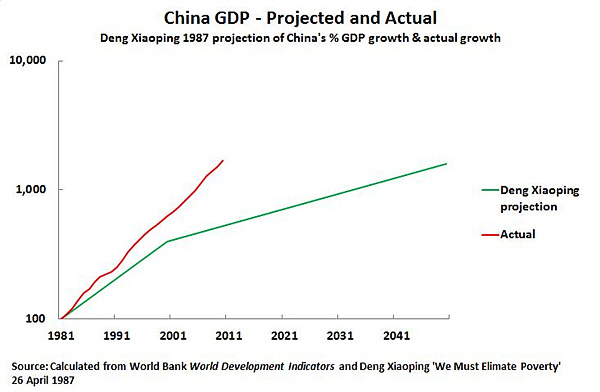China's economy grew 3 times faster than the US
- By John Ross
 0 Comment(s)
0 Comment(s) Print
Print E-mail China.org.cn, February 2, 2015
E-mail China.org.cn, February 2, 2015
Another example may be taken from The Economist. In June 2002, the magazine produced a special China supplement called "A Dragon out of Puff." This report said of China, "The economy still relies primarily on domestic engines of growth, which are sputtering. Growth over the last five years has relied heavily on massive government spending. As a result, the government's debt is rising fast. Coupled with the banks' bad loans and the state's huge pension liabilities, this is a financial crisis in the making." The Economist's conclusion in 2002 was, "In the coming decade, therefore, China seems set to become more unstable." In reality, far from entering a crisis, China was about to enter the decade of the fastest growth ever experienced by a major economy in recorded history.
Why does such repeated inaccurate analysis of China's economy continue to appear in the Western media? It is striking that, during its economic reform, China has not underperformed its own ambitious projections but has consistently outperformed them. To graphically illustrate this, Figure 3 compares the Deng Xiaoping's projections for China's economic growth shortly after the start of the reform process with China's actual economic growth.
Deng Xiaoping's first stated target was to increase the size of China's economy by 400 percent between 1981 and 2000; the actual increase was 623 percent. The second goal was to increase China's GDP by a further 400 percent between 2000 and 2050, or a 1,600 percent increase between 1981 and 2050. In reality, China's economy had already grown by over 2,200 percent compared to 1981 by 2014. Deng Xiaoping's target was reached 38 years ahead of schedule! As regards China's latest stated goal - to double GDP between 2010 and 2020 - China is also ahead of its growth target.







Go to Forum >>0 Comment(s)